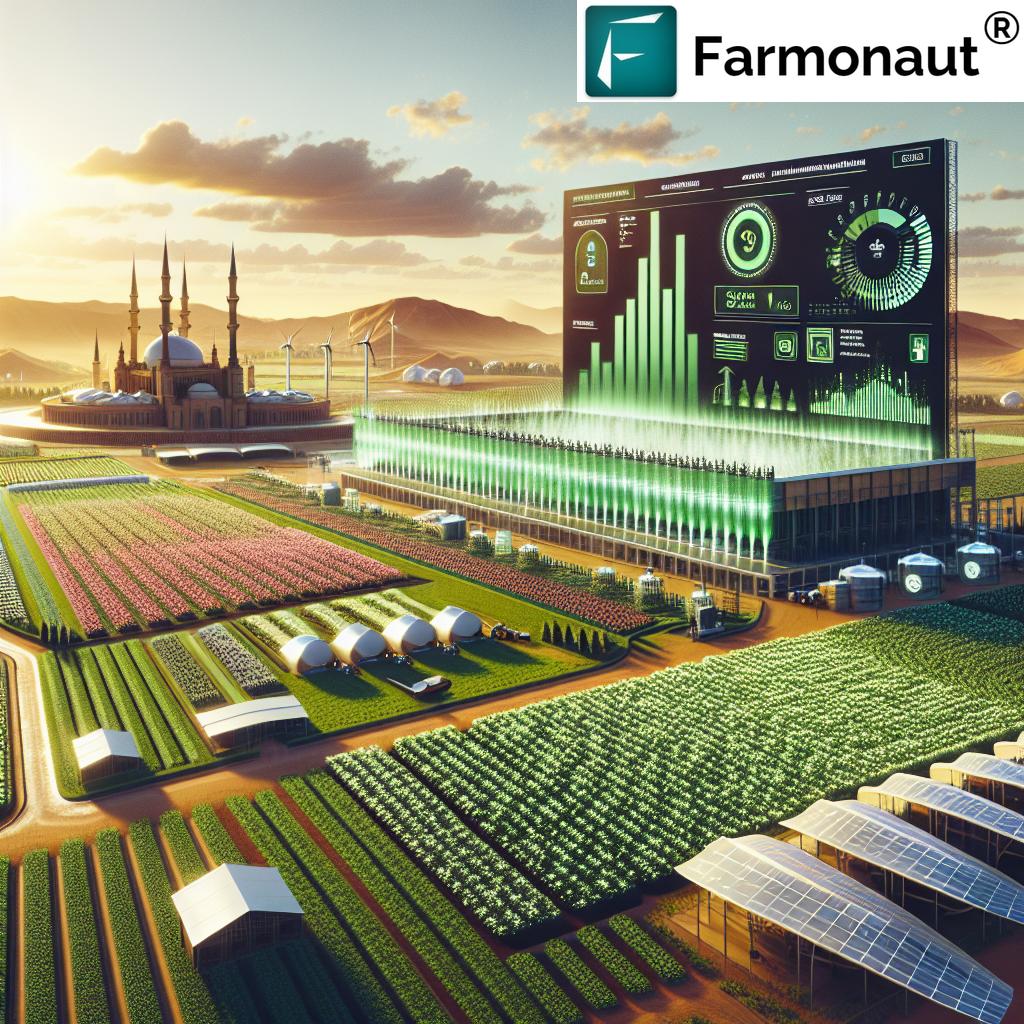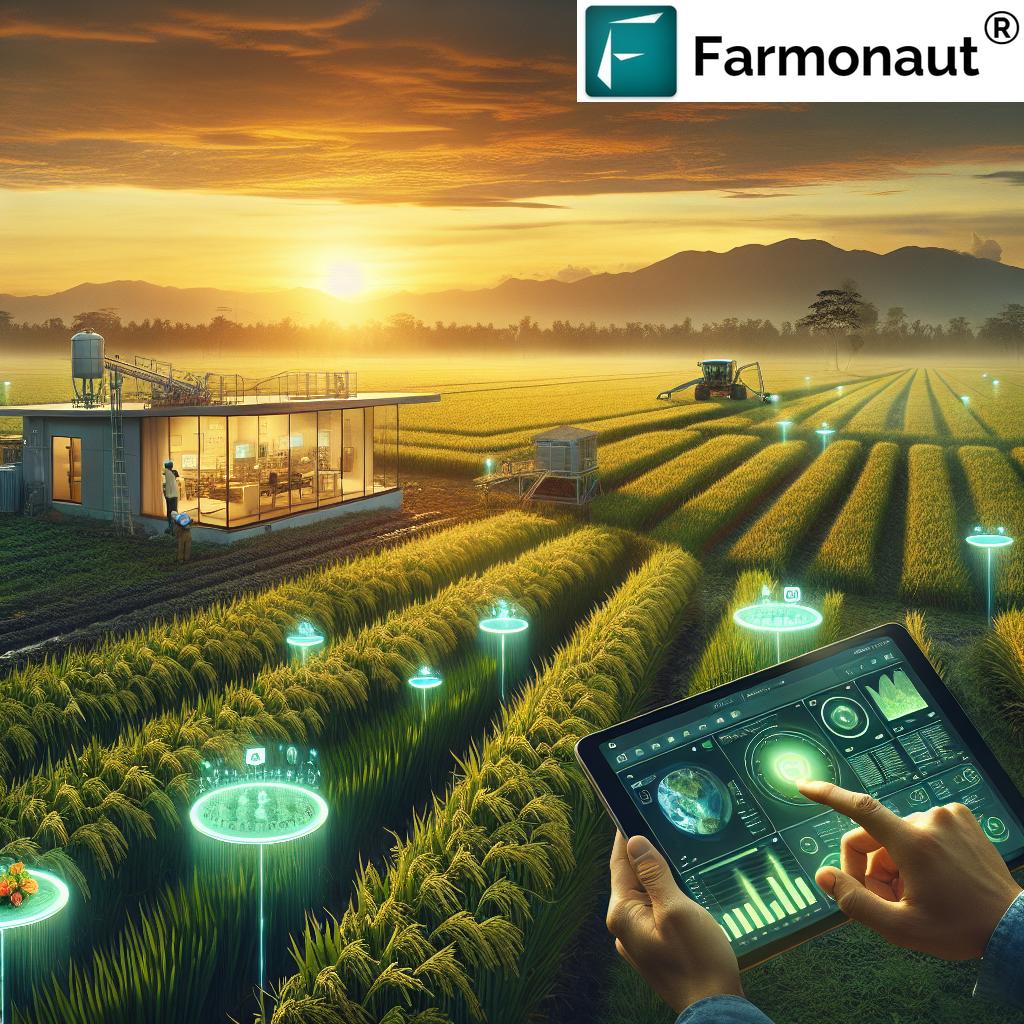“India’s carbon farming aims to sequester 15 million tonnes of CO₂ by 2025 through agriculture and forestry practices.”
Carbon Markets Agriculture: Boosting India’s 2025 Carbon Farming
As the global imperative to combat climate change intensifies, the intersection of carbon markets agriculture and sustainable farming systems is gaining unprecedented attention—particularly in countries like India, where farming not only underpins rural livelihoods but represents a powerful carbon sink opportunity. The year 2025 is shaping up to be transformative, with carbon markets centered on agriculture and forestry now offering Indian farmers a new pathway: By adopting climate-smart practices, they can enhance carbon sequestration, unlock additional income streams, and play a central role in building a sustainable global future.
This comprehensive blog explores how the agriculture carbon sequestration market is evolving in India, what “carbon farming india” really means, the critical role of technology and data, policy and financial mechanisms, and how integrated approaches—such as agroforestry and digital MRV—are redefining agriculture and carbon markets for 2025 and beyond. We also discuss how platforms like Farmonaut empower stakeholders with satellite insights, carbon footprinting, and traceability—driving measurable climate impact and farmer prosperity.
Carbon Markets Agriculture: An Overview
Carbon markets agriculture refers to systems—voluntary or compliance-based—where carbon credits are traded, each representing a tonne of carbon dioxide or equivalent greenhouse gases removed or avoided. Within the agriculture sector, these markets reward farmers for adopting climate-smart practices that reduce emissions or increase carbon storage in soil and vegetation. The range of practices includes:
- No-till/Conservation Tillage: Minimizing soil disturbance to retain carbon in the ground.
- Cover Cropping: Planting non-cash crops during off-seasons to sequester carbon and improve soil health.
- Agroforestry: Integrating trees with crops/livestock, combining forest carbon and agricultural benefits.
- Biochar Application: Adding stable carbon-rich material to soil for long-term carbon storage.
- Improved Nutrient Management: Reducing fertilizer use and optimizing input timing to limit nitrous oxide (greenhouse gases) emissions.
The vast landscape of Indian agriculture—with its diversity in cropping systems, farmers, and climate—offers significant potential for carbon sequestration through an approach now called “carbon farming india.” This is about more than just reducing emissions—it’s about using sustainable practices to improve productivity, restore degraded soil, and build resilience against climate change, all while accessing new income streams.
How do carbon markets agriculture systems work? When a farmer (or an aggregate of smallholder farmers) adopts practices that reduce or sequester a ton of CO₂ equivalent, an independent body verifies the reduction/removal, then issues a carbon credit. Companies, governments, or individuals buy these credits—each representing a real, measured climate benefit—supporting sustainable agriculture and compensating farmers for their stewardship.
Emergence and Importance in the Indian Context
India’s agriculture carbon sequestration market is moving beyond the pilot stage. New government policies, private sector initiatives, and climate finance mechanisms are converging, attracting attention from global markets eager for credible nature-based carbon offsets. This provides a rare opportunity for Indian agriculture—especially marginal and smallholder farmers—to gain from a change that both addresses the imperative of climate action and offers a financial incentive for sustainable transitions.
Key Terms:
- Carbon Credits: Tradable certificates proving a quantity of greenhouse gases removed (a ton of CO₂ equivalent) via verified practices.
- Emission Reduction: Actions that directly decrease the amount of CO₂ or equivalent emitted to the atmosphere.
- Carbon Sequestration: Processes—especially via forest carbon and soil—that actively remove atmospheric carbon and lock it into stable pools.
- Co-benefits: Biodiversity, water retention, and livelihood improvements that often accompany climate-smart agriculture.
Forest Carbon: Synergizing Agriculture and Forestry
Forests play a crucial role in carbon sequestration, storing vast amounts in trees and soil. But in India, the synergistic practice of agroforestry—combining trees with crops or livestock—is unlocking a win-win: boosting carbon stocks while enriching biodiversity and farmer income.
- Agroforestry converts land into a dual sink: Trees capture CO₂ for decades while soil improves under mixed systems.
- Multiple benefits: Farmers harvest timber, fruit, fodder (diversified income), see reduced erosion, and improved resilience to monsoon, drought, and market shocks.
- Forest carbon credits: Generated under voluntary and compliance programs, sold to global markets—connecting smallholder farmers with green finance.
Recent national policies in India now encourage tree plantations on marginal lands and support agroforestry as part of agriculture and markets development. These policies incentivize the integration of forestry and agriculture for maximum climate, livelihood, and ecosystem gains.
Are farmers actually profiting? By 2025, millions of Indian farmers could be participating in carbon markets—selling their forest carbon credits, improving their income streams, and building assets for future generations. This not only increases the share of climate finance reaching rural communities, but also improves overall landscape health and resilience.
Types of Forest Carbon Projects in India
- Afforestation/Reforestation: Transforming degraded or marginal lands into new forest stands with native/biodiverse species.
- Agroforestry Systems: Combining productive trees (fruit, timber) with annual crops—e.g., intercropping mango, teak, or bamboo alongside cereals and legumes.
- Silvopasture: Integrating trees with pasture and livestock for diversified ecosystem services and carbon gain.
- Forest Protection Projects: Preventing illegal logging/clearance, ensuring existing carbon stocks are preserved.
“Over 3 million Indian farmers could participate in carbon markets, accessing new income streams from sustainable climate-smart agriculture.”
The Agriculture Carbon Sequestration Market in India
India is embarking on a pivotal phase in developing its agriculture carbon sequestration market. The intersection of robust national policy, innovative techniques, and digitally powered markets is transforming not just how carbon is measured and traded, but who participates—and who benefits.
Current Landscape and Key Initiatives
- National Mission on Sustainable Agriculture (NMSA): Government initiatives promoting climate-resilient agricultural practices, improved soil management, and resource conservation.
- State-Level Programs: Local governments piloting carbon farming, offering training, aggregation services, and access to carbon market mechanisms.
- Private Sector Pilots: Companies and project developers aggregating smallholders, facilitating their entry into carbon markets agriculture and connecting rural India to global green finance flows.
How do Indian farmers earn carbon revenue? By registering their emission reductions with recognized standards (such as Verra, Gold Standard, or CORSIA), Indian farming groups can sell carbon credits either domestically or internationally—often at prices several times higher than traditional crop income.
India’s Competitive Advantages in Carbon Sequestration
- Vast potential: Over 140 million hectares of cultivable land and 31% forest cover—enormous sink capacity.
- Smallholder innovation: Cooperative groups and digital aggregation enable even marginal farmers to access carbon markets agriculture.
- Low implementation costs: Many climate-smart techniques (e.g., no-till, cover cropping) are low-cost or cost-saving by nature.
- Favorable climate: Humid tropics and monsoonal regimes speed biomass growth, soil carbon building.
Participation in agriculture and markets for carbon offers greater income stability and climate resilience. However, the real challenge lies in measurement, verifying emission reductions and sequestration at the farmer level, and ensuring trust throughout the value chain.
Technology’s Role in Carbon Farming India 2025
Technology is the backbone of India’s progress toward a robust agriculture carbon sequestration market for 2025 and beyond. Digitalization, satellite analytics, and AI-powered monitoring are revolutionizing how we measure, report, and verify carbon farming efforts at scale.
- Remote Sensing & Satellite Monitoring: Satellite-based platforms track crop health, biomass changes, and soil moisture, providing cost-effective, scalable MRV for carbon market projects.
- AI & Machine Learning: Algorithms process multispectral images for accurate identification of land-use changes, soil carbon levels, and yield impacts.
- Blockchain Registries: Blockchain ensures transparency and traceability in the creation, transfer, and retirement of carbon credits—critical for market integrity.
- Mobile & Cloud Platforms: Empower farmers to report activity, track progress, and access real-time guidance on best practices.
As a leader in satellite technology, we at Farmonaut provide real-time monitoring, AI-based advisory systems, and blockchain-enabled traceability—delivering scalable MRV and data-driven insights to support credible, transparent carbon markets agriculture across India. Our satellite-based monitoring covers vegetation health (NDVI), soil conditions, and environmental impact—enabling robust carbon footprinting and sustainable resource management. If you’re interested in digital MRV for agriculture carbon sequestration, explore our Carbon Footprinting Solutions for extensive climate data and compliance support.
APIs Available: For developers or integration at organizational scale, you can utilize our Farmonaut Satellite & Weather API for precision agriculture, and for complete API documentation, check our API Developer Docs.
Making MRV Accessible for Smallholders
- Aggregation platforms and digital cooperatives pool smallholder efforts, reduce transaction costs, and distribute carbon market earnings fairly.
- Verification models based on satellite data, machine learning, and ground samples make low-cost, high-quality carbon credits possible.
Ultimately, affordable and scalable carbon MRV is what will enable carbon farming india to mature, grow, and include every type of farmer in carbon markets agriculture.
How Farmonaut Empowers Carbon Markets in Agriculture
For scalable, transparent carbon markets agriculture in India, we at Farmonaut deliver a holistic solution leveraging satellite analytics and digital technology:
- Environmental Impact Monitoring: Our platform offers carbon footprint tracking for agriculture, supporting regulatory compliance and driving sustainable practices. For growers, businesses, or policymakers, Carbon Footprinting Tools help quantify and strategize for measurable emission reductions.
- Blockchain-based Traceability: End-to-end verification using satellite and blockchain ensures market trust, supports additional income streams—especially vital as digital marketplaces for carbon credits mature. Explore our Traceability Solutions.
- AI Advisory & Real-time Monitoring: Our Jeevn AI system delivers custom agricultural practice advisory, seasonal forecasts, and productivity tips; these help farmers in India increase yields and adapt to climate stress for 2025 and beyond.
- Subscription-based Access & APIs: Organizations and digital platforms can scale with Farmonaut APIs and tailored subscription plans.
- Resource & Fleet Monitoring: Optimized resource management and fleet operation tools cut costs for agricultural collectives, reducing emissions, and supporting efficient scaling—learn about Fleet Management Tools for agri-businesses.
To further streamline crop loan and insurance validations using real-time data (thus reducing risk and supporting rural finance participation in carbon markets agriculture), our Crop Loan and Insurance Verification Platform offers powerful digitization for financial institutions and farmers.
Putting it all together: Whether you’re a single farmer, an FPO, or a corporate conglomerate, Farmonaut’s solutions unlock affordable and transparent participation in India’s growing agriculture carbon sequestration market for 2025 and beyond.
Comparison Table: Climate-Smart Practices for Indian Agriculture (2025 Estimate)
To help you understand the practical implications of different climate-smart agricultural and forestry methods, here’s a comparative snapshot—highlighting their estimated carbon sequestration rates, cost, and income potential for India’s farmers in 2025.
| Practice Type | Estimated Carbon Sequestration (tonnes CO₂/ha/year) |
Estimated Farmer Income Increase (INR/ha/year) |
Estimated Implementation Cost (INR/ha/year) |
Sustainability/Climate Benefit |
|---|---|---|---|---|
| Agroforestry | 5 – 10 | 9,000 – 23,000 | 4,000 – 8,000 | High biodiversity, long-term carbon storage, diversified income streams |
| No-Till Farming | 1.2 – 2.5 | 4,000 – 7,500 | 1,800 – 4,200 | Soil erosion control, improved water retention, reduced fuel use |
| Cover Cropping | 1 – 2 | 3,200 – 6,800 | 2,000 – 4,000 | Soil health, weed suppression, carbon sequestration |
| Improved Rice Cultivation | 0.8 – 1.6 | 2,000 – 8,000 | 1,500 – 5,500 | Reduced methane (major greenhouse gas), better water use, yield stability |
*Estimates are based on literature reviews and average market conditions as of 2025. Income gains reflect both direct carbon market payments and yield/efficiency savings.
Challenges and Future Outlook for 2025 & Beyond
The promise is real, but challenges remain:
- Measurement complexity: Accurately quantifying soil carbon and verifying long-term sequestration is technically demanding and can be expensive without digital innovation.
- Permanence and Leakage: Ensuring carbon stays stored for decades—and that emission reductions are not offset elsewhere (“leakage”)—is essential for market integrity.
- Livelihood vs. Climate Interests: Farmers need quick, reliable returns—integration of carbon market incentives into daily agricultural decision-making must be grounded in robust policy and capacity building.
- Market Access: Smallholders require aggregation platforms, fair benefit sharing, and easy certification to participate equitably.
- Robust Policy and Data: Alignment with India’s Nationally Determined Contributions (NDCs), innovative finance tools (like blended finance), and legal clarity are needed for scale.
Future Outlook: 2025 will likely witness exponential growth in India’s agriculture carbon sequestration market, with increasing integration of technology, aggregation models, and green finance mechanisms. The synergy between government missions, digital MRV, and farmer-centric policy promises a triple win: climate change mitigation, improved livelihoods, and sustainable land use.
India’s journey in carbon markets agriculture is set to inspire emerging economies globally, proving that sustainability, technological inclusivity, and economic prosperity for farmers can—and must—go hand in hand.
Farmonaut Subscriptions
Unlock industry-leading, affordable satellite monitoring, carbon footprinting, and traceability with Farmonaut’s transparent subscription options. Enable your journey in carbon markets agriculture through precision data and actionable insights:
Frequently Asked Questions: Carbon Markets Agriculture in India 2025
-
What is a carbon market, and how does it relate to agriculture?
Carbon markets are trading systems for carbon credits, each representing a ton of CO₂ equivalent emissions avoided or removed. In agriculture, farmers can earn credits by adopting practices that sequester carbon in soil or vegetation, then sell these credits for income. -
What is carbon sequestration, and which farming practices help maximize it in India?
Carbon sequestration is the process of removing atmospheric CO₂ and storing it in stable pools (soil, biomass, forests). Practices such as agroforestry, cover cropping, no-till farming, and improved rice cultivation are among the best for sequestering carbon in India. -
How can smallholder farmers participate in carbon markets agriculture?
Through cooperatives, FPOs, or digital platforms (like those powered by Farmonaut), smallholders can aggregate their efforts, access MRV tools, and sell certified credits for additional income. -
Are carbon markets profitable for Indian farmers in 2025?
Yes, with increasing demand for nature-based carbon credits, Indian farmers adopting climate-smart practices can earn supplementary income—often several thousand INR/ha/year—while making fields more resilient. -
How does Farmonaut help with carbon footprinting and traceability?
We provide satellite-based, digital tools for real-time carbon monitoring, AI-based advisory, blockchain-enabled traceability, and transparent reporting—empowering stakeholders to participate in credible carbon markets agriculture. -
What hurdles remain for agriculture carbon sequestration markets in India?
Challenges include measurement accuracy, ensuring permanence, smallholder inclusion, and policy clarity. Technology and robust policy are gradually improving these barriers. -
Is digital MRV (Monitoring, Reporting, Verification) the future for carbon markets?
Absolutely. Satellite and AI-based MRV lower costs, boost trust, and make credible, large-scale participation in carbon markets agriculture possible for millions in India.
For those looking to empower sustainable agriculture in India through digital precision, environmental compliance, and transparent market engagement, Farmonaut’s platform is your gateway. To discover more, explore our solutions like Crop Plantation & Forest Advisory Services and Large Scale Farm Management App.












